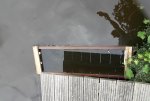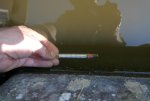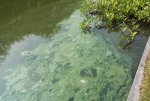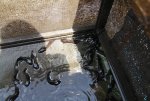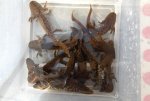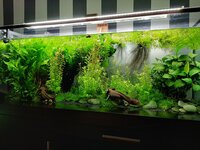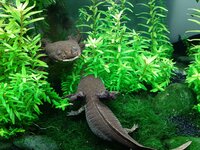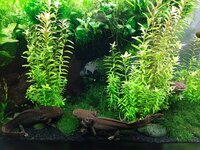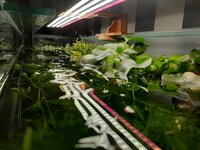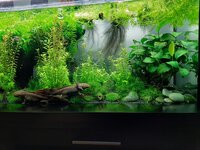They survived almost everything.
It's been a while since my last post.
A lot has happened to the animals. The (40) young andersoni who were kept in a ditch outside in a mesh container. Have shown themselves as good survivors. Daytime water temperatures of thirty degrees Celsius were no exception in this extremely hot summer. And the water was contaminated with blue algae for a few weeks. The (20) andersoni living in the house also survive this difficult time. The animals 12-13cm had to leave because it became impossible to provide enough food. Made an appointment with a reptile and amphibian shop to offer all animals at a large reptile fair. An extra table was arranged especially for my animals. A few days before this fair, I received a call saying that there is new European legislation regarding the trading of newts. it was now forbidden to trade salamanders within Europe. Everything changed now, and the inevitable happened in the following month. Animals deteriorated visibly, 6 andersoni selected and placed in the box in the house, the other animals went outside. finally the animals in the house survived 2 male 4 female. A male has been put in the aquarium. This is because a man died after I fed him a guppy. This was the first time a guppy was fed and also the last time, don't know what went wrong. Vacation 08-2019 been a month to indonesia. My pump starts to leak 4 weeks before departure. Ordered and installed a new 900 l / h pump, the next morning the water was not crystal clear. The water slowly began to whiten. Bacterial growth in the new pump I thought this would normalize soon. But it went differently than I expected. On the day of departure for Indonesia, the water was still not crystal clear. Everything transferred to the new caretaker and left. In all good intentions the caregiver decided after a few days to do a water change. So this had the opposite effect. When I returned the water was still not 100% and I found a dead animal floating. Two animals had eye damage, one of them on both eyes. This was bad luck if the old pump had not leaked, probably nothing bad had happened. it took more than a month before everything was crystal clear again. 03-2020 It seems that the blind animal has started to see a bit again, the white pupils are a bit more dark again. The deceased female has been replaced by a young female of her own.




